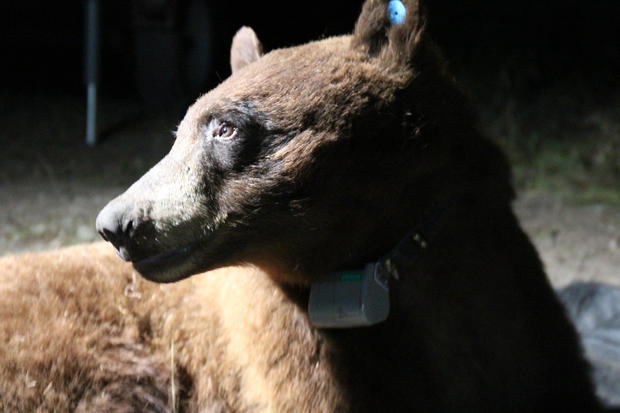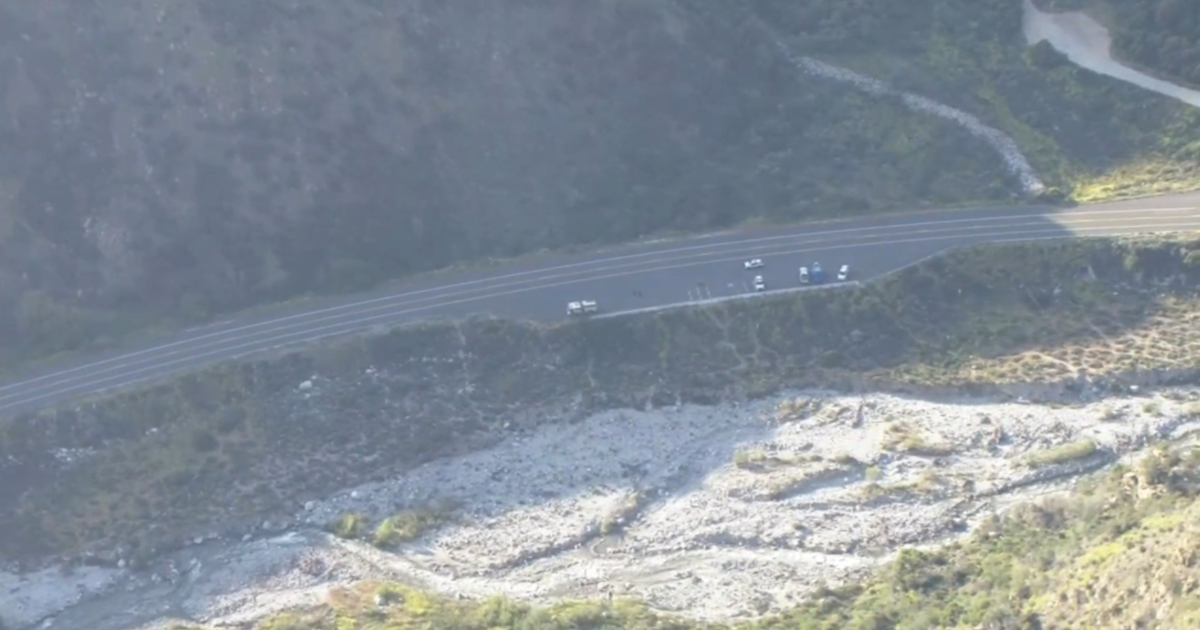Wildlife biologists capture, tag black bear in Santa Monica Mountains for the first time
After years of sightings, the National Park Service announced they have finally captured and tagged a black bear in the Santa Monica Mountains.
"He appears to be the only bear here in the Santa Monica Mountains, and he's likely been here for almost two years based on our remote camera data," said Jeff Sikich, the lead field biologist of the park's two-decade mountain lion study. "This seems to be our first resident bear in the 20 years we have conducted mountain lion research in the area. It will be interesting to see how he shares the landscape with our other resident large carnivores."
The nearest known population of black bears resides in the Santa Susana Mountains, southwest of Santa Clarita. NPS biologists said that some have been documented in the Simi Hills, which is west of Canoga Park and south of Simi Valley. Bears have rarely been seen in the Santa Monica Mountains, but biolgists have never been able to gather enough evidence to prove that bears are breeding in the area. The NPS said that they did discover a bear carcass in the area in the early 2000s, after a landslide in Malibu Creek State Park.
"We will not really ever be able to know with certainty how he got here," said Ana Beatriz Cholo, a spokesperson for the National Parks Service. "But, we suspect that if he did come from the Santa Susana Mountains, he would've had to cross the 118 Freeway and the 101 Freeway, which is kind of crazy."
Biologists have named the 210 pound black bear BB-12 and he is believed to be 3-4 years old. They believe he is the same bear that people have spotted walking along Newbury Park's Reino Road in 2021. He has since been seen on wildlife trail cameras moving from Malibu Creek State Park to Point Mugu.
Biologists examined BB-12 — taking samples, measurements and evaluating his health — before placing a GPS collar on his neck and a tag on his ear.
"As this bear gets older and is looking to mate, it might attempt to move back north and cross the freeway again," Sikich said. "There is no evidence of an existing population here in the Santa Monica Mountains, and therefore likely no females. With the radio-collar, we can track its movements and hopefully know where it may attempt to cross the freeway. This can help us better understand habitat connectivity for wildlife in the area."
The NPS is excited to see new insights into the area's wildlife thanks to the BB-12. According to the NPS, the Santa Monica Mountains National Recreation Area is the largest urban national park in the country and is one of five Mediterranean ecosystems in the world.
"We're going to be studying his movements, what he gets up to, how he possibly interacts with our local mountain lion population," said Beatriz Cholo. "We're excited about BB-12."
Wildlife officials recommend that anyone who encounters a black bear avoids eye contact with it and slowly back away from it, do not run away.
It is uncommon that black bears will attack people but if one does it is imperative people fight back.



